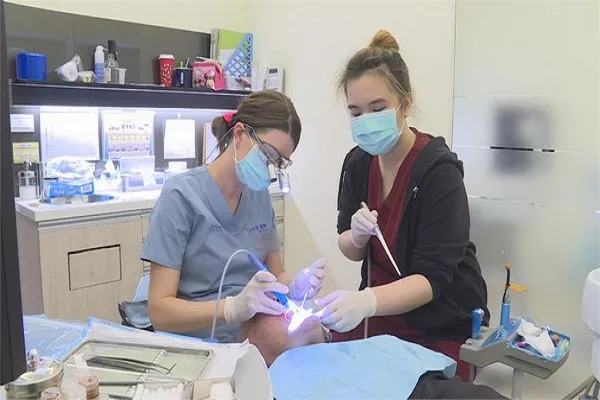Dental implants have become a revolutionary solution for those seeking permanent replacements for missing teeth. While the benefits are significant, prospective patients often express concerns about potential pain during and after the dental implant procedure. In this comprehensive guide, we delve into the nuanced aspects of discomfort associated with dental implants, exploring the factors influencing pain levels, coping strategies, and the overall journey towards a restored smile.
Understanding the Dental Implant Procedure:
Surgical Precision:
Dental implant placement is a surgical procedure involving the precise insertion of titanium posts into the jawbone.
The surgical nature of the process influences the level of discomfort experienced by patients.
Osseointegration:
Following implant placement, the jawbone undergoes a crucial healing process known as osseointegration.
The integration of implants with the bone is a vital step that contributes to the long-term success of dental implants.
Factors Influencing Pain Levels:
Individual Pain Thresholds:
Pain perception varies among individuals, influenced by factors such as tolerance, anxiety levels, and overall health.
Understanding one’s pain threshold helps manage expectations during the dental implant journey.
Surgical Technique:
The skill and technique of the oral surgeon or implantologist play a significant role in the level of discomfort experienced.
Advanced surgical approaches and technology can minimize trauma and enhance patient comfort.
Number of Implants:
The number of implants being placed can influence the overall discomfort.
Multiple implants may result in more extensive surgical procedures, impacting the post-operative recovery phase.
Use of Sedation:
The choice of sedation methods, such as local anesthesia, conscious sedation, or general anesthesia, can impact the patient’s pain experience.
Discussing sedation options with the dental team is essential for personalized comfort.
Immediate Post-Operative Discomfort:
Surgical Site Sensitivity:
Patients commonly experience some level of sensitivity, swelling, and discomfort immediately after the surgery.
This is a natural response to the trauma and manipulation of oral tissues.
Prescribed Medications:
Oral surgeons may prescribe pain medications and anti-inflammatory drugs to manage post-operative discomfort.
Strict adherence to prescribed medications is crucial for effective pain management.
Swelling and Bruising:
Swelling and bruising around the surgical site are common, reaching their peak in the initial 48 hours.
Cold compresses and elevation of the head can help alleviate swelling.
Managing Discomfort During Osseointegration:
Dietary Considerations:
Patients are advised to follow a soft diet during the initial healing phase to minimize stress on the implants.
Avoiding excessively hot or cold foods can enhance comfort.
Oral Hygiene Practices:
Gentle oral hygiene practices are crucial during osseointegration.
Using a soft-bristled toothbrush and following the dentist’s guidelines contribute to a comfortable healing process.
Regular Follow-Up Appointments:
Regular follow-up appointments with the dental team allow for monitoring the healing progress.
Any concerns or discomfort can be addressed promptly, ensuring optimal recovery.
Long-Term Comfort and Functionality:
Completed Osseointegration:
Once osseointegration is successfully completed, patients often experience a significant reduction in discomfort.
The dental implants become integrated and function like natural teeth.
Properly Fitted Prosthetics:
The final step involves the attachment of prosthetics, such as crowns or dentures, to the implants.
Well-fitted prosthetics contribute to enhanced comfort and functionality.
Coping Strategies and Patient Education:
Open Communication:
Establishing open communication with the dental team fosters a supportive environment.
Patients should feel comfortable discussing concerns and asking questions about pain management.
Mind-Body Techniques:
Incorporating mind-body techniques, such as deep breathing exercises and mindfulness, can help manage anxiety and discomfort.
These techniques promote relaxation during the dental implant journey.
Understanding the Healing Process:
Patient education plays a vital role in managing expectations.
Understanding the phases of the dental implant process helps patients anticipate and cope with potential discomfort.
Conclusion:
In conclusion, the discomfort associated with dental implants is a multifaceted aspect of the overall journey towards achieving a restored smile. Factors such as surgical technique, individual pain thresholds, and post-operative care influence the level of discomfort experienced by patients. While immediate post-operative discomfort is common, proper pain management, adherence to prescribed medications, and follow-up appointments contribute to a smoother recovery.
As patients progress through the osseointegration phase and beyond, the long-term benefits of dental implants become apparent. The ability to chew, speak, and smile with confidence adds immense value to the overall quality of life. Patient education, open communication, and the incorporation of coping strategies empower individuals to navigate the dental implant process with resilience and confidence.
While some discomfort is inherent in any surgical procedure, the transformative impact of dental implants on oral health and aesthetics reinforces their status as a groundbreaking solution for tooth replacement. The collaborative efforts of patients and dental professionals, coupled with advancements in dental implant technology, continue to shape a future where the journey towards a restored smile is marked by both comfort and success.
How Much Dental Implants Cost In USA
How Much For A Full Dental Implant
Does Medicare Cover Dental Implants ?






























